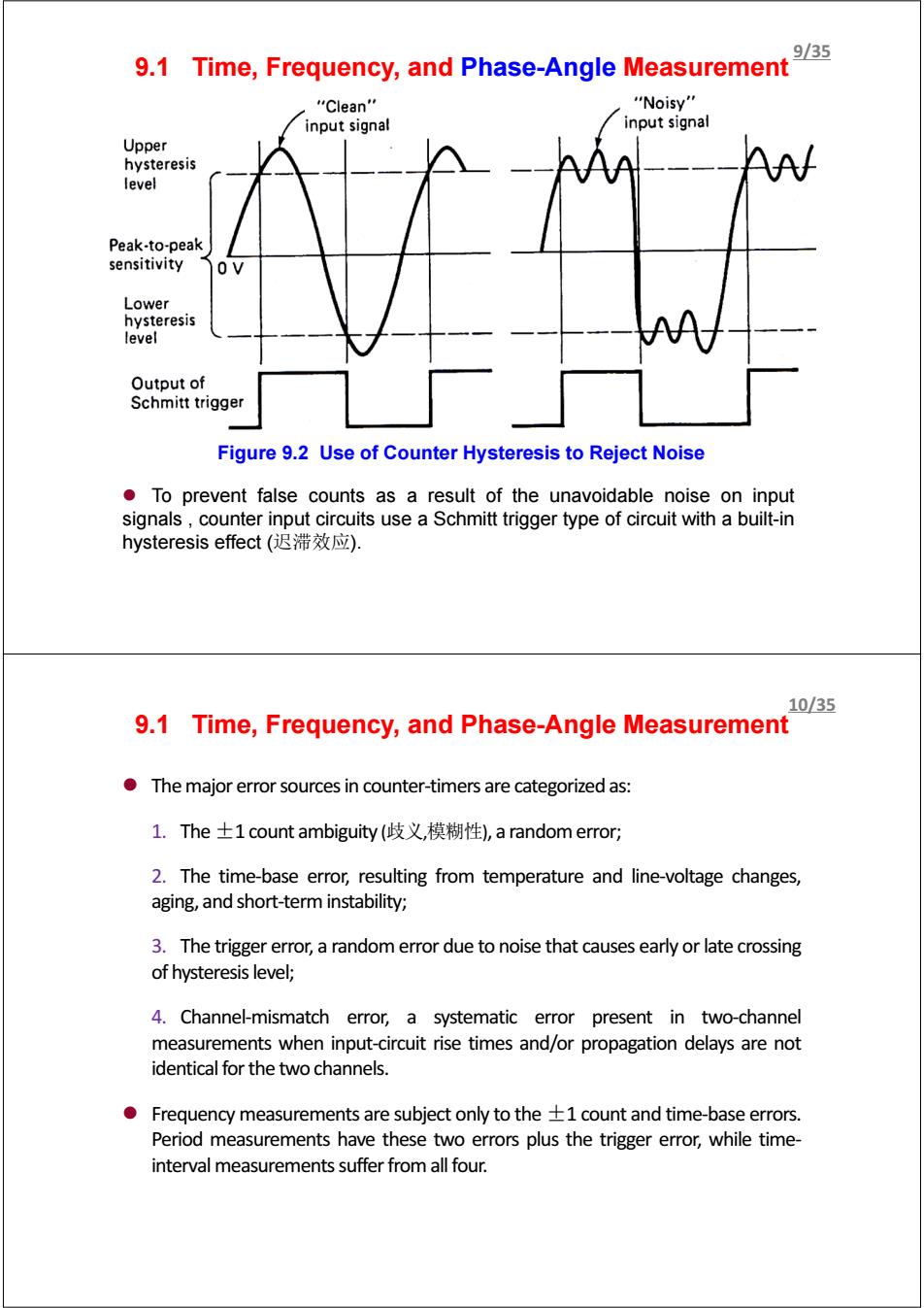正在加载图片...

9/35 9.1 Time,Frequency,and Phase-Angle Measurement "Clean" “Noisy" input signal input signal Upper hysteresis level Peak-to-peak sensitivity OV Lower hysteresis level Output of Schmitt trigger Figure 9.2 Use of Counter Hysteresis to Reject Noise To prevent false counts as a result of the unavoidable noise on input signals,counter input circuits use a Schmitt trigger type of circuit with a built-in hysteresis effect(迟滞效应). 10/35 9.1 Time,Frequency,and Phase-Angle Measurement The major error sources in counter-timers are categorized as: 1.The士1 count ambiguity(歧义,模糊性),a random error; 2.The time-base error,resulting from temperature and line-voltage changes, aging,and short-term instability; 3.The trigger error,a random error due to noise that causes early or late crossing of hysteresis level; 4.Channel-mismatch error,a systematic error present in two-channel measurements when input-circuit rise times and/or propagation delays are not identical for the two channels. Frequency measurements are subject only to the +1 count and time-base errors. Period measurements have these two errors plus the trigger error,while time- interval measurements suffer from all four.Figure 9.2 Use of Counter Hysteresis to Reject Noise z To prevent false counts as a result of the unavoidable noise on input signals , counter input circuits use a Schmitt trigger type of circuit with a built-in hysteresis effect (迟滞效应). 9.1 Time, Frequency, and Phase-Angle Measurement 9/35 9.1 Time, Frequency, and Phase-Angle Measurement z The major error sources in counter-timers are categorized as: 1. The±1 count ambiguity (歧义,模糊性), a random error; 2. The time-base error, resulting from temperature and line-voltage changes, aging, and short-term instability; 3. The trigger error, a random error due to noise that causes early or late crossing of hysteresis level; 4. Channel-mismatch error, a systematic error present in two-channel measurements when input-circuit rise times and/or propagation delays are not identical for the two channels. z Frequency measurements are subject only to the ±1 count and time-base errors. Period measurements have these two errors plus the trigger error, while timeinterval measurements suffer from all four. 10/35